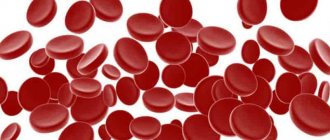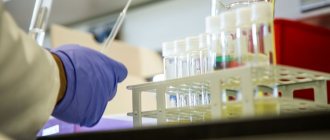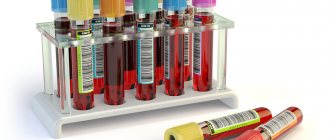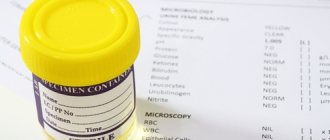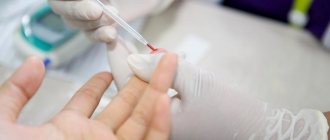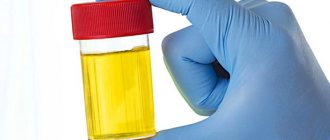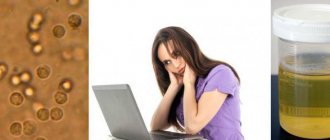Urinary tract infections are widespread among all age groups of the population. Children and women, including pregnant women, are especially often affected by them. The insidiousness of the disease lies in its often hidden course. In the arsenal of modern medicine there are many diagnostic methods that can detect infections of the urinary system. The simplest and most common of them is a general urine test, and the most informative is urine culture. Urine is submitted for sterility not to an ordinary laboratory, but to a special bacteriological laboratory. The test can detect even asymptomatic forms of urinary tract infections.
What is bacterial seeding?
Bacteriological examination, urine culture, sterility analysis, bacteriuria analysis - all these are different names for the same research method. Its essence lies in the fact that the collected material (urine) is sown on a medium nutritious for bacteria and placed in a thermostat. The parameters necessary for bacterial growth (temperature, humidity) are maintained there. After some time, colonies of microorganisms appear, their number is counted to determine the overall indicator of microbial contamination of the material. This is the level of bacteriuria or the microbial number of urine - the number of colony-forming units (CFU) in 1 ml of urine. A CFU is one microorganism that has given rise to one colony.
To identify the pathogen, all colonies are subject to biochemical typing. This stage allows you to determine whether the microbe belongs to a specific species. If necessary, the sensitivity of bacteria to antibiotics is determined. For this purpose, special discs impregnated with various antibiotics are used. If there is no colony growth around the disc, this indicates that the antibiotic is effective against the microbe. Sensitivity is measured in millimeters of the diameter of a circle in which there is no growth zone.
The entire diagnostic process takes from 7 to 10 days.
Interpretation of urine test for sterility
The interpretation is based on the detection and quantity of CFU in the material under study (CFU is a living microbial cell or a group of them, on which the growth of microbial colonies depends).
If 1000 or less CFU/ml is detected, no treatment is needed here; the bacterial flora got here by accident, most likely from the genitals when collecting material.
When the amount is from 1000 to 10,000 CFU/ml, this result is considered questionable. Sowing must be repeated.
If the result is 100,000 CFU/ml or more, it indicates the presence of an infectious process. You cannot do without taking antibiotics for such indicators.
Indications for bacteriological examination
In a healthy person, urine is sterile. Bacteria enter it directly from the urinary tract or from the outside due to errors in collecting material for research. Typically, the manifest forms of urinary infections are easily identified by a general urine test. But sometimes it is necessary to donate urine for bacterial culture:
- Suspicion of an infection of the bladder, kidneys, urinary tract (cystitis, pyelonephritis or unspecified localization), the symptoms of which are: fever, painful and frequent urination, pain in the lower back or abdomen, chills, vomiting, diarrhea, discoloration and turbidity of urine.
- A large number of bacteria or leukocytes in a general urine test.
- Monitoring the treatment of urinary tract infection (7th day of antibiotic therapy).
- To detect relapse after acute pyelonephritis (convalescence period).
- To detect exacerbation of chronic pyelonephritis.
- Preventive examination in pregnant women upon registration in the first trimester and shortly before birth (at 36 weeks).
- Preventive examination in infants 3 months.
A referral for a urine test for sterility is issued by a general practitioner, pediatrician, family doctor, nephrologist, urologist, obstetrician-gynecologist.
Rules for submitting material for bacteriological research
Any bacteriological laboratory can issue instructions to the patient with information on how to take a urine test for sterility. Most facilities will also provide a sterile, disposable plastic container for collection of material upon pre-visit. If it has not been issued, it is better to purchase one yourself at the pharmacy than to use reusable containers, because this increases the possibility of foreign contamination of the material.
There are general rules for donating urine for bacterial culture that should be followed:
- At least 2 weeks before the study, avoid taking antibacterial drugs, except in cases of treating an existing urinary tract infection and conducting a study to monitor the effectiveness of therapy.
- Before the analysis, do not take diuretics, too much liquid. This reduces the concentration of microbes in the urine.
- Women should refrain from giving urine until after their period, or if the test is urgent, use a secure tampon.
- For research, the most informative is the first morning urination. You should not urinate for at least 4 hours beforehand, and do not eat or drink.
- Urine should be collected after thoroughly cleaning the external genitalia and perineal area. For this purpose, you should wash with running water using regular soap without antibacterial additives (baby soap is best). It is prohibited to use antiseptic solutions to ensure that the test result is reliable.
- After washing, blot the skin with a paper towel or ironed cloth.
- To prevent microflora from entering the genitals, women (including pregnant women) should insert a cotton swab into the vagina.
- Wash your hands with soap.
- Unpack the disposable urine container. Do not touch the inner surface of the lid or the walls of the container with your fingers or the skin of the genitals or perineum.
- The woman should spread the labia majora, and the man should open the foreskin, freeing the opening of the urethra. You need to collect the middle part of the portion, the first and last parts of the urine are directed into the toilet. For research, 10-15 ml is enough.
- The container is immediately screwed tightly. Collected urine should be delivered to the laboratory within two hours after urination. As an exception, if it is not possible to maintain this time interval, the container should be placed in the refrigerator for no more than 3-4 hours.
It is important to follow these rules impeccably, otherwise violation of them may lead to external contamination of the material. Long-term storage of the sample also compromises the sterility of the urine due to bacterial growth. The result of the analysis should be expected at least 7-10 days.
Technology for collecting and submitting urine for culture
The first rule that patients must follow when donating is to ensure the cleanliness of the genitals. This requirement is due to the fact that the largest number of bacteria enter the urinary system through the urinary system. Failure to comply with this rule may result in distortion of survey data.
Urine should be collected in a sterile container
The list of rules ensuring passing the test can be presented as follows:
- Urine is collected in sterile containers; the pharmacy chain sells special jars for analysis.
- On the eve of the test, avoid eating fatty, salty foods, sweets, marinades and alcohol. The possibility of taking medications during this period should be discussed with a specialist.
- Urine collection is carried out early in the morning on an empty stomach.
- The last urination should be no earlier than 5 hours before the collection of biomaterial.
- The volume of urine should be no more than 100 ml.
- Urine collection is not carried out during menstruation.
- Urine is collected only in a sterile container - transfusion is not allowed.
Following the rules will help you get accurate test results.
Carrying out an examination of a child
Unlike adults, collecting urine from a child, especially an infant, presents certain difficulties. And, if absolute sterility is not required for general analysis, then this condition is mandatory for bacteriological research. Otherwise, the analysis will be uninformative.
To collect urine from children for bacterial culture, you can use the following tips:
- After the child wakes up, you need to immediately take him to the bathroom to wash himself, since the very first morning portion of urine is the most informative for analysis. Wash the child under running water using baby soap without an antibacterial effect. Boys are washed in a random order, and girls are washed strictly with movements from the genitals to the perineum. The direction of the water jet is the same. The skin is blotted with a disposable paper towel or an ironed, clean diaper.
- Before collecting urine from a baby, you should choose a method. You can place a sterile plastic container under the stream of urine and try to catch it closer to the middle portion. Since the frequency of urination in newborns and infants is quite high, you usually do not need to wait long. Massaging or pressing on the baby's tummy with a warm hand, pouring water nearby, or drinking warm drinks can help speed up the process. The disadvantage of this method is that you can accidentally touch the inner walls of the container with your fingers or the baby’s skin, which can affect the result.
- Nowadays, the most optimal method of collecting urine in a children's disposable sterile urine bag, which can be purchased at almost every pharmacy. The device is a plastic bag with a graduated scale for measuring urine volume. Its base is treated with an adhesive substance, and there is also a hole there. Having peeled off the protective tape, the urinal is attached with a sticky surface to the girl’s labia so that the genital slit is opposite the opening of the device; in a boy, it is attached to the pubis, and the penis is immersed inside the pouch. All you have to do is wait for urination; you can put on panties or a diaper on top so that the child does not take it off. Nowadays, urinals are produced separately for girls and boys in accordance with anatomical features.
- After urination, the most unpleasant moment comes - the pouch coming off. It may cause pain to the child. Next, the urine is poured into a sterile container and delivered to the laboratory no later than 2 hours after collection.
Important! Do not use a pot, disposable diaper, gauze or diaper to collect the analysis.
Decoding the analysis results
The material donated by the patient is placed in a nutrient medium and sent to an incubator for a day. This forms a whole colony of bacteria, which are then sown in Petri dishes. After another day, the grown samples are divided by species, their number is again increased and they are tested for vulnerability when interacting with antibiotics.
The main parameter in determining the presence or absence of inflammation and infectious foci in the body in this study will be the concentration of colony-forming units (CFU). These are the cells of those harmful microbes that over time can grow into a whole colony. If an increase in CFU is detected, the result of the sterility test will be positive, therefore, it is necessary to prescribe a course of treatment. When bacterial growth is not detected, there is no need to worry. If we speak in the language of numbers, it will look like this: with an indicator of up to 1000 CFU/ml - everything is normal and the patient is healthy, from 100,000 CFU/ml and more - there is a disease caused by these bacteria, from 1000 to 100,000 CFU/ml - a retake of the analysis is required, since it is impossible to establish the diagnosis correctly.
Culture indicators for healthy women and men
A small number of harmful bacteria and rods are present in everyone, even a healthy person. There are certain parameters that affect sterility:
- straw-yellow color of urine and its transparency;
- degree of concentration - from 1008 to 1026 g/ml;
- the permissible protein content is 0.033 mol/l;
- 0 to 1 visible red blood cells;
- permissible number of bacteria - no more than 10*4/ml;
- from 3-5 units of epithelial tissue within the limits of visibility;
- urine reaction - neutral, slightly acidic, slightly alkaline;
- absence of mucus, crystals and glucose;
- for men, the norm of leukocytes is from 0 to 3, for women - up to 6 visible.
What will be normal during pregnancy?
In this case, bacterial culture for sterility is examined when determining pregnancy and at 36 weeks
The importance of the test is determined by its accuracy - even with good results, for example, a general urine test, there is a possibility of detecting asymptomatic or chronic diseases of the genitourinary system. As a rule, pregnant women can be diagnosed with fungi such as Candida, Escherichia coli, Staphylococcus aureus, and fecal enterococcus
The results will help you quickly and correctly complete the course of treatment without harming the unborn child, and avoid pyelonephritis - bacterial inflammation of the kidneys. Unfortunately, expectant mothers are susceptible to it due to general weakening and increased stress on the body.
Normal values for pregnant women will be: straw or deep yellow urine, transparent, without glucose, ketone bodies and casts, with a density of 1010 to 1030 g/l, 0.075 g/l protein and up to 5 detected leukocytes. Density values exceeding the norm are evidence of inflammation in the kidneys; opaque urine indicates a large amount of phosphates.
Features of sampling
The procedure for collecting urine for sterility in children is not an easy process. Urine is collected from newborns and infants using special polyethylene receivers, which can be purchased at a pharmacy (the medium for collecting the material must be sterile). Such devices need to be glued: for boys - directly to the genitals, for girls - the upper part to the pubis, and the lower part - to the anus. Boys need to wear a diaper over the receiver, and girls need to be held until urination.
Indicators and standards
A healthy child is characterized by the following bacterial culture parameters:
- up to 2 years, urine density is 1002-1004 g/l;
- up to 5 years - 1012-1020 g/l;
- up to 12 years - 1011-1025 g/l.
The field of view will reveal: at least 1 cylinder, up to 6 leukocytes, up to 2 units of epithelium, slightly acidic reaction of the material (from 4.5 to 8 pH). Protein, mucus, mushrooms, salts, bacteria are not detected in healthy children. Urine is clear, straw-yellow in color. Deviation from the norm shows various pathologies. The presence of bacteria and fungi leads to infectious inflammation. Diabetes mellitus in a child is determined by the presence of glucose. Urethritis and cystitis help identify casts. An alkaline reaction may occur with preference for vegetables or inflammation.
